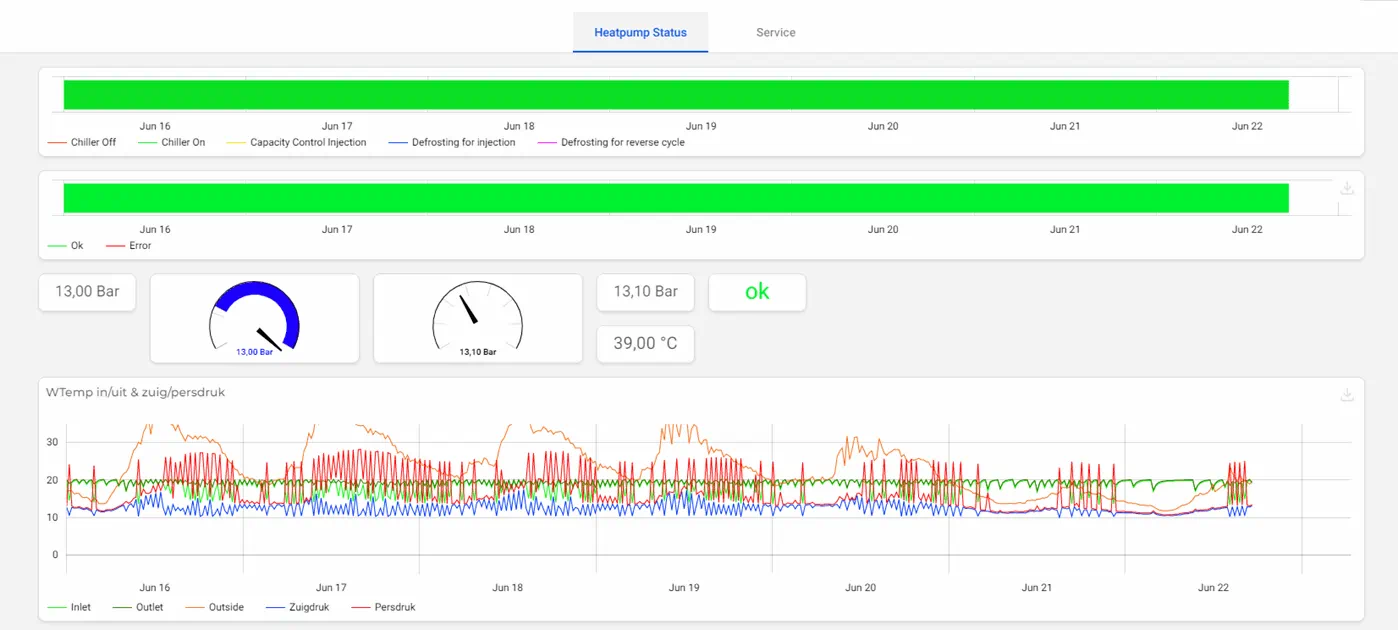Sjors de Kleijn from IXON wrote an interesting article on how to maintain machine health, improve service and reduce downtime with Industrial Internet of Things (IIoT) solutions like web-based machine condition monitoring and alarms. Here are the highlights.
Monitoring and controlling the condition of a machine provides insight into wear & tear, damage and mechanical risks of machine parts. If a specific parameter is continuously out of range, underlying issues that could damage the machine or its components can be assessed and repaired before a downtime event or costly damage occurs.
What conditions can you monitor on a machine?
Machine condition data can be analysed to better understand machine health and to maintain equipment. Below are some of the conditions that can be monitored to identify machine part trends, predict failures, and roll out condition-based maintenance activities:
- Vibration monitoring: Monitoring vibration patterns can offer insight into part durability and changes can indicate a failing tool before a human can begin to see a problem.
- Bearing wear monitoring: Bearing faults can cause damage to manufacturing equipment, and usually occur during startup and slowdown times. Monitoring the condition of bearings can save maintenance costs and prevent downtime as critical failures become less frequent.
- Load monitoring: Load misalignment and dull cutting materials can tell operators that tool life may be ending.
- Torque monitoring: Identify anomalies in the rotational force of the machine to prevent machine failures, and broken tools.
- Spindle speed monitoring: Analyse revolutions per minute (RPMs) of spindles, noting how the spindle speed can affect wear on the tool and lead to tool breakages.
- Temperature monitoring: Temperature is a clear indicator of many potential problems within a machine. Monitoring machine temperature can impede overheating and prevent machine part failures.

Example condition monitoring dashboard with insights into sensor parameters, image courtesy of IXON
Machine condition monitoring techniques
There are several possible methods for monitoring critical machinery parameters. This can take the form of continuous measurements, periodic measurements and/or remote measurements.
- Periodic measurement - Periodic measurements (e.g. per millisecond, minute, hour) of parameters provide insight into the change over time. On the configured fixed interval the data is collected and a trend can be built up. From the trend and data analysis it will then become clear what caused the change so corrective measures can be advised.
- On change measurements - On change measurements provide insight into the change and behavior of a parameter. For example when a boolean or fault code changes value.
- On trigger measurements - With log on trigger you can configure a variable as trigger and connect other variables to this trigger. Once the trigger happens, all linked variables will be logged once. This can be used for logging multiple variables simultaneously based on a certain trigger and will allow you to look back at your data associated with the trigger in a clear and easy overview to find correlations.

Read the full original article here.






